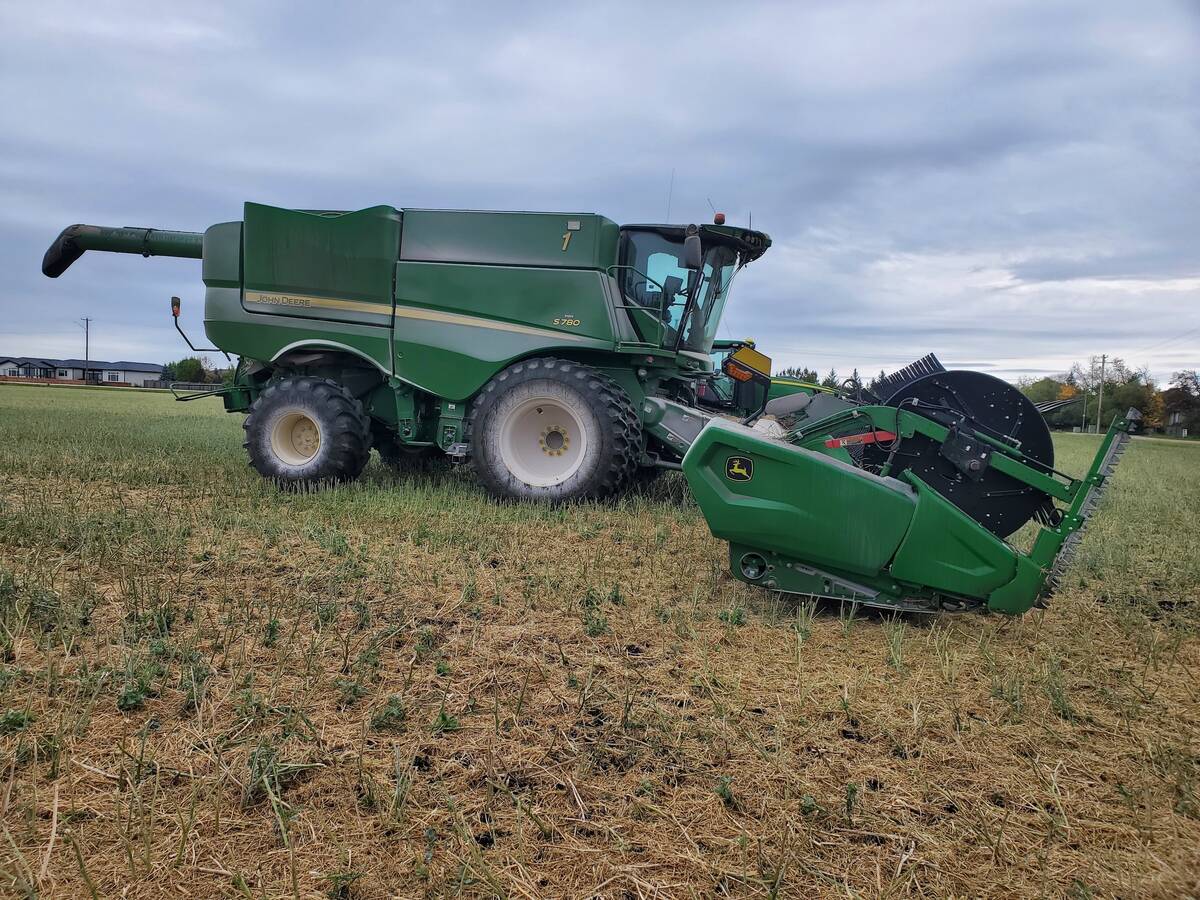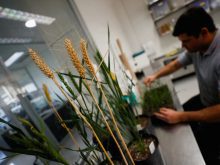Despite similar appearance, all bees are not created equal.
Some specialize in pollination and others are good at producing honey. More importantly, some bees have a natural resistance to the mites and bacteria that have decimated hives across Canada in recent years.
Leonard Foster, a professor in biochemistry and molecular biology at the University of British Columbia, is trying to genetically identify the bees that are more resistant than others.
“Essentially what we’re looking for is genetic differences in bees that are resistant versus bees that are susceptible,” said Foster, who is leading the $2.8 million project that includes researchers from Agriculture Canada and UBC.
Read Also

Powdery mildew can be combine fire risk
Dust from powdery mildew can cause fires in combines.
Foster and his team are seeking molecular markers in bees’ genetic code, which will hopefully help beekeepers select the fittest and most resistant insects for breeding.
“It’s the same type of idea that is used in medicine all the time. For instance, the screen for prostate cancer is to look for prostate specific antigens (PSA),” Foster said.
“If we can identify some sort of equivalent to PSA in bees … then we can look for that marker (that signifies resistance) in a wide variety of bees and start selective breeding of those bees.”
Thirty-six percent of bees died over the winter in Canada in 2008, double the normal mortality rate, according to a news release from last fall announcing funding for Foster’s research.
Unfortunately, the high loss rate was not simply a blip but a continuation of a trend seen in the last few years.
However, Foster said colony collapse disorder (CCD), a widely reported and mysterious phenomenon, is not responsible for most bee deaths in Canada.
“The big problem that has hit the United States, colony collapse disorder, is not well understood. In Canada, officially at least, we don’t have this (CCD),” he said.
“For most Canadian beekeepers, it’s been fairly clear that the varroa mites are the top reason (behind the losses).”
He said starvation, the weather and the parasitic fungus nosema are other factors.
Varroa mites are parasites that attach to bees’ thorax and suck blood, weakening and shortening a bee’s lifespan.
Rob Currie, an associate professor of entomology at the University of Manitoba, said beekeepers used to be able to control the mites with pesticides, but that’s no longer the case.
“The primary problem is really resistance to acaricides,” he said, which is the type of pesticide used on the mites.
Other products are available, Currie said, such as organic acids that can reduce the mite load, but reducing numbers and killing off the mite are two different things.
Currie said the focus in Manitoba has been on stronger bees rather than stronger pesticides.
“We’re trying to get off the pesticide treadmill,” he said, adding there is an ongoing bee selection program in Manitoba.
“We’ve been focusing primarily on bees that have more tolerance to get through the winter with high mite loads. And we try to select for bees that have the ability to groom mites off their body.”
Currie said it’s difficult to observe bees removing parasites, but data collected over a winter indicates certain bees are better at combating mites.
“We find that some colonies will remove 60 percent or so of their mites over the winter,” he said, which is a higher percentage than other stocks of bees.
Using that kind of practical data will be key to Foster’s research at UBC.
His project will collaborate with two bee selection programs: one in B.C.’s West Kootenay region and the other at Agriculture Canada’s research centre in Beaverlodge, Alta.
He said the idea is to collect bee tissue samples from those sites and look for molecular markers in a lab at UBC.
“They’re collecting various pieces of data on their end, and we’re collecting our data.”
The data will then be combined to connect the genetic markers to the desirable traits.
However, Foster said the objective of the project is not to build a super bee that can withstand any parasite anywhere in Canada.
“You can’t just select one line of bee that will be very resistant,” he said, because bees don’t do the same job across the country.
Some pollinate cranberries in B.C. and others produce honey in Saskatchewan.
While the project is still in the early stages, the idea is to improve local bee populations and develop bees that are more resistant to varroa mites and other threats.
“The hope is that we’ll be able to go to the Lower Mainland, go to the Peace River or go to Saskatchewan, and using the bees already there start selecting out the ones that are more resistant,” said Foster.

















